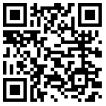
在类似Unix的操作系统上,more命令一次显示一个屏幕,显示文本。
查看英文版
1 more 运行系统环境
2 more 描述
3 more 语法
4 more 例子
Unix&Linux
查看英文版
more [-dlfpcsu] [-num lines] [+/pattern] [+linenum] [file ...]
选件
| -num lines | 设置组成一屏的行数。该线必须是一个整数。 |
| -d | 使用此选项,当按下非法键而不是响铃时,more消息将提示用户“ [按空格继续,'q'退出。” ”消息,并显示“ [按'h'获得指示。] ”一口钟。 |
| -l | more通常将^ L(CONTROL-L,换页符)视为一个特殊字符,并将在包含它的任何行之后暂停。该-l选项将阻止这种行为。 |
| -F | 导致more的是逻辑而不是屏幕行(即,长行未包装)。 |
| -p | 不要滚动。相反,请清除整个屏幕,然后显示文本。如果将more可执行文件命名为page,则此选项将自动打开。 |
| -C | 不要滚动。而是从顶部绘制每个屏幕,清除每行显示的其余部分。 |
| -s | 将多条空白行压缩为一条空白行。 |
| -u | 不要显示下划线。 |
| + /string | 搜索字符串 string,并在显示文件时前进到包含字符串的第一行。 |
| + num | 从行号num开始显示文本。 |
指令
显示文件时,可以基于文本编辑器vi松散地使用一组命令来控制more内容。在以下描述中,某些命令之前可以带有一个十进制数字,称为k。
| h,? | 显示帮助(显示简要的命令摘要)。如果您忘记了所有其他命令,请记住这一条! |
| [ k ]SPACE | 按下空格键将显示接下来的k行文本。如果未指定k,则more将全屏显示新文本。 |
| [ k ] z | 就像按SPACE一样,但是k成为要显示的新的默认行数。 |
| [ k ]RETURN | 按返回键将显示接下来的k行文本。默认值为1行。如果指定,k将成为新的默认值。 |
| [ k ] d,[ k ] ^ D | 按d或CONTROL-D滚动k行。默认值为当前滚动大小,最初为11行。如果指定,k将成为新的默认值。 |
| q,Q,^ C | 按q,Q或CONTROL-C(中断键)退出程序。 |
| [ k ]s | 向前跳过k行文本。默认为1。 |
| [ k ] f | 向前跳跃ķ文本screenfuls。默认为1。 |
| b,^ B | 按b或CONTROL-B会向后跳过k行文本。默认值为1。(仅在查看文件而不是管道输入时有效)。 |
| ' | 转到上一个搜索开始的地方。 |
| = | 显示当前行号。 |
| [ k ] /pattern | 搜索正则表达式模式的第k个出现。默认为1。 |
| [ k ] n | 搜索最后一个正则表达式的第k次出现,默认为1。 |
| !command,:!command | 在子shell中执行命令。 |
| v | 在当前行启动编辑器。如果定义了环境变量 ,则从环境变量VISUAL中获取编辑器;如果未定义VISUAL,则从环境变量EDITOR中获取。如果都未定义,则默认为“ vi ”。 |
| ^ L | 按CONTROL-L重画屏幕。 |
| [ k ] :n | 转到第k个下一个文件。默认为1。 |
| [ k ] :p | 转到第k个前一个文件。默认为1。 |
| :F | 显示当前文件名和行号。 |
| 。 | 重复上一个命令。 |
环境
more使用以下环境变量的值(如果已定义):
| MORE | 默认more选项。如果设置了此变量,则more会将其读取为要使用的默认选项集。在命令行上指定的任何选项都将覆盖$ MORE中指定的选项。 |
| SHELL | 当前使用的外壳程序(此变量通常由外壳程序本身在登录时设置)。 |
| TERM | 当前的终端类型。越来越多的人使用此值来确定操作屏幕的正确方法。 |
查看英文版
more +3 myfile.txt
从第3行开始显示文件myfile.txt的内容。
more +/"hope" myfile.txt
显示文件myfile.txt的内容,从包含字符串“ hope ”的第一行开始。
ls | more
使用ls列出当前目录的内容,使用more一次一次显示列表。
查看英文版
mail | mailcompat | merge | mesg | mii-tool | mkdir | mv | mkfs | mkswap | modinfo | modprobe | mt | mach |
未知的网友